Getting Back to the Topic of Anchors
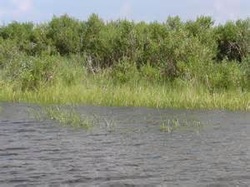
There are times, Kirk said, when using an anchor is more of a hassle than a help. For instance...when he paddles upon an oyster bar that is covered in grass at high tide and he knows that there is a good current of water running through a nearby cut, he doesn't use his anchor at all. He paddles quietly right on top of a grass patch which causes enough friction to halt his forward motion and this acts as a natural anchor. His kayak isn't going anywhere at this point until he physically makes an effort to move it. He'll cast into the oyster bar cut half a dozen times and if he hooks into a fish his kayak might be pulled out naturally during the fish fight, but he never had to mess with an anchor during the process.
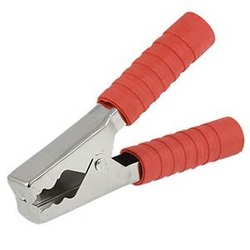
He brought up another anchor option that involved something a little bit more unconventional. He said that there are times when you may want to anchor down close to a mangrove line and fish a nearby channel or good sized hole. A claw anchor has a tendency to get hooked onto a mangrove root (which is great for the anchoring aspect) but it's a little bit more work to get that anchor out of a messy root system when you want to pick up and go in a hurry. For this type of situation, he suggested investing in a cheap set of alligator clips and tying you anchor rope to that and just clipping your anchor line to a nearby branch and then adjust the length of your line as you need, either keep it close or allow yourself to drift out a ways....it's a pretty neat idea!
The Benefits of a Kayak vs a Boat
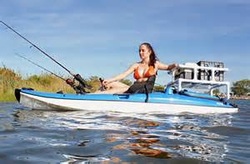
At that point, Kirk explained the two biggest reasons that he chooses to fish from a kayak instead of a boat.
1...A kayak does not have to be registered with the DMV because it is not motorized like a boat is, and that can be an inconvenience over the years. Now, if you opt to have a small motor installed (even a trolling motor) well then, that's a different ball game and it will have to be registered at that point.
2...A kayak can simply be thrown in the back of a truck or on top of a vehicle which makes for quick loading and unloading. It's not a big hassle to be on the water fishing less than an hour after you've gotten off of work, assuming you live/work that close to the water.
1...A kayak does not have to be registered with the DMV because it is not motorized like a boat is, and that can be an inconvenience over the years. Now, if you opt to have a small motor installed (even a trolling motor) well then, that's a different ball game and it will have to be registered at that point.
2...A kayak can simply be thrown in the back of a truck or on top of a vehicle which makes for quick loading and unloading. It's not a big hassle to be on the water fishing less than an hour after you've gotten off of work, assuming you live/work that close to the water.
Less is More
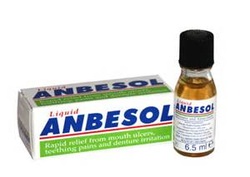
Kirk is a minimalist, the less he has on his kayak, the more comfortable he is, so he doesn't take too many things with him when he goes out kayak fishing. Here is a list of what he DOES take (aside from rod, reel and tackle)
1...He takes a dry-bag which holds all of his electronic trinkets like cell phone and keys.
2...A paddle leash.
3...A safety bag which contains a big whistle among other things.
4...He brings a tow rope with a carabiner clip on each end. This is just in case he has to tow some poor soul who didn't have enough energy to paddle back on their own.
5...He also has a first aid kit that includes the following:
A...A pair of hook cutters
B...A tube of Anbesol, which a topical anesthetic for your gums (used if/when you have a toothache to relieve pain). However, Kirk uses it if/when someone has accidentally embedded a fishing hook into their, or someone else's, skin. Anbesol, combined with ice, will deaden the nerve endings around the affected skin enough to allow the hook to be pulled out with minimal discomfort.
C...A bottle of hydrogen peroxide to cleanse the area where the hook was removed.
All really great ideas!!
1...He takes a dry-bag which holds all of his electronic trinkets like cell phone and keys.
2...A paddle leash.
3...A safety bag which contains a big whistle among other things.
4...He brings a tow rope with a carabiner clip on each end. This is just in case he has to tow some poor soul who didn't have enough energy to paddle back on their own.
5...He also has a first aid kit that includes the following:
A...A pair of hook cutters
B...A tube of Anbesol, which a topical anesthetic for your gums (used if/when you have a toothache to relieve pain). However, Kirk uses it if/when someone has accidentally embedded a fishing hook into their, or someone else's, skin. Anbesol, combined with ice, will deaden the nerve endings around the affected skin enough to allow the hook to be pulled out with minimal discomfort.
C...A bottle of hydrogen peroxide to cleanse the area where the hook was removed.
All really great ideas!!
Door Prize Time
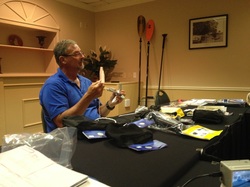
We had a great discussion about all things related to kayak fishing and Kirk gave us some super ideas about how to solve some of the problems we'd been experiencing as well as some suggestions and guidelines to follow. We really learned a lot. He ended our meeting by handing out his business cards, Kayak brochures, a map (that is no longer on the market) called "BOATING and ANGLING GUIDE to CITRUS COUNTY" which outlines from top to bottom the coastline of Citrus County. He gave out "15% OFF" coupons for anyone that has been a prior customer of his and "10% OFF" any new customers. Finally, to wrap things up in a fun way, he had three highly coveted items on the table in front of him that he brought as door prizes. He picked the following names: Lucy won the yellow dry-bag, Theresa won the 3 lb claw anchor, Donna won the wind-up flashlight, and Virginia won the waterproof cell-phone case. We all were very thankful for Kirk's generosity in giving up some time to speak to us and donating some items to give away. He really is a great guy and we appreciated his straight forward approach and we learned a lot. Hope we can talk him in to returning again next year!!

 RSS Feed
RSS Feed